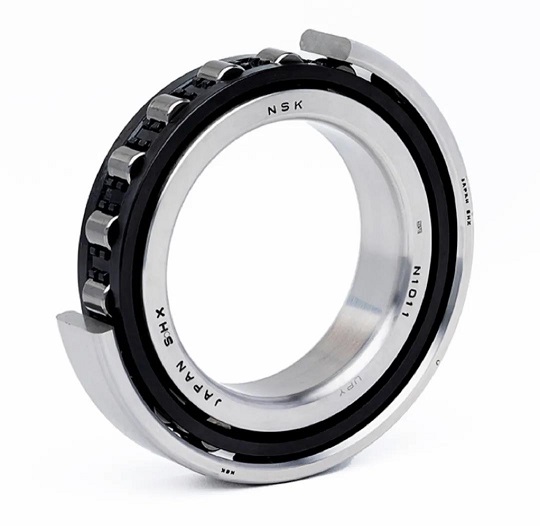Check the tightness of the bearing and the shaft shoulder
Under normal circumstances, a bearing fitted with a tight fit interference must be close to the shaft shoulder. Testing method:
(1) Lighting method. That is to say, aim the light at the NSK bearing and the shaft shoulder, and judge the light leakage. If there is no light leakage, the installation is correct; if there is even light leakage around the shaft shoulder, it means that the bearing is not close to the shaft shoulder, and pressure should be applied to the bearing to make it close; if there is some light leakage, it means that the bearing is installed tilted. You can use a hammer or copper rod. Or the sleeve knocks on the inner ring of the bearing and slowly settles.
(2) Thickness gauge inspection method. The thickness of the thickness gauge should start from 0.03mm. During the inspection, try to insert several places on the entire circumference of the bearing inner ring end face and the shaft shoulder. If there is a gap and very uniform, it means that the bearing is not installed in place, and the bearing inner ring should be pressurized to make it close to the shaft shoulder;
If the pressure is increased and the tightness is not tight, it means that the rounded corners of the rounded part of the journal are too large, and the bearing is stuck. The rounded corners of the journal should be trimmed to make it smaller; if the end face of the bearing inner ring and the bearing shoulder are found in some parts The thickness gauge can pass, indicating that it must be disassembled, trimmed, and reinstalled at this time.
If the bearing is installed in the bearing housing hole with an interference fit, when the outer ring of the bearing is fixed by the housing hole shoulder, whether the end face of the outer ring is tight with the housing hole shoulder end and whether the installation is correct can also be checked with a thickness gauge.

When installing the thrust bearing, check the verticality of the shaft ring and the shaft center line. The method is to fix the dial indicator on the end surface of the case, make the contact of the indicator rest on the raceway of the bearing shaft ring while rotating the bearing, while observing the dial indicator pointer, if the indicator yaws, it means that the shaft ring and the center line of the shaft are not perpendicular. When the box shell hole is deep, it can also be inspected with an extended dial gauge.
When the thrust bearing is installed correctly, its seat ring can automatically adapt to the rolling of the rolling elements to ensure that the rolling elements are located in the upper and lower ring raceways. If it is installed backwards, not only the bearing will not work properly, but also the mating surfaces will be severely worn. Since the difference between the shaft ring and the seat ring is not very obvious, you should be extra careful during the assembly and make no mistake.
In addition, there should be a gap of 0.2-0.5mm between the seat ring of the thrust bearing and the bearing seat hole to compensate for the errors caused by inaccurate parts processing and installation. When the center of the bearing ring shifts during operation, this gap It can be ensured that it is automatically adjusted, avoiding contact and friction, and making it work normally. Otherwise, it will cause severe damage to the bearing.
Check whether the bearing noise, temperature rise, and vibration meet the requirements. Generally, the operating temperature of the bearing should be lower than 90°C. When the temperature is too high, it will cause the bearing to heat and anneal or burn, which will reduce the service life.

